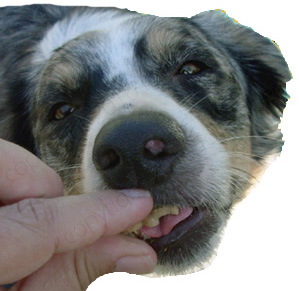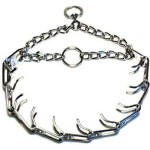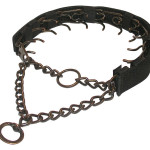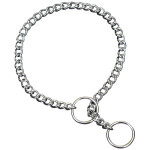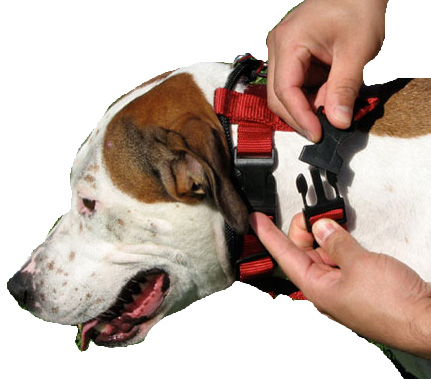I got a call from a potential client whose young dog was returned to them in a fearful state after having completed a board-and-train with a shock-collar trainer. Though they called it an e-collar, which is the nice-nice term shock collar trainers use to indoctrinate their clients into believing shock is a harmless buzz. It’s not.
There are two ways to motivate dogs to learn.
One way is through reward-based motivation, which is what we use at Love Wags A Tail Dog Training. Reinforce the dog with stuff he likes such as food, play sessions, and praise when he makes the decisions we’re looking for, and remove the stuff he likes when he makes decisions we’re not looking for. Example. If a dog in training decides to sit when a person approaches, he gets attention from that person. If he decides to jump on the person, no attention is given and more effectively, the person even leaves.
The second way is through pain, which Love Wags A Tail never uses. When a dog does not listen to a command, a correction is given that’s painful enough to get the dog to notice and conform. When a dog happily comes up to greet a person, and jumps up, he is given a knee to the chest or a foot to the groin. Do that enough times and the dog stops jumping and even fears approaching people.
Using collars to coerce a dog to listen is also part of the pain-based method. If a dog doesn’t sit after the command is given, the trainers then inflict pain on the dog with their collar of choice. When the dog sits, the dog receives relief from the pain. Pain trainers do a good job of convincing their clients that their techniques don’t hurt. Of course they do! Otherwise, they wouldn’t work.
A pinch or prong collar when pulled tightly is terribly painful. Metal prongs into skin? Yes, that hurts. And interestingly enough, there are some clever individuals who have made a prong collar with a cover, so you don’t see the prong collar. Why hide the type of collar you are using on your dog?
Why is a choke collar called a choke collar? Because it chokes! It can asphyxiate a dog, and has. We’ve seen this technique on TV in the name of entertainment.
The Illusion collar was designed to strangle dogs most efficiently of all choke collars. It fits high on the dog’s neck so that the cord is pulled and tightened along the most vulnerable area of a dog’s throat where there is no muscle protecting the trachea. Notice how stressed the dog in these pictures is. His body language is speaking volumes. Ears are pinned back, lips are pulled back, panting, forehead wrinkles. What a horrible nightmare to be latched into such a torturous device.
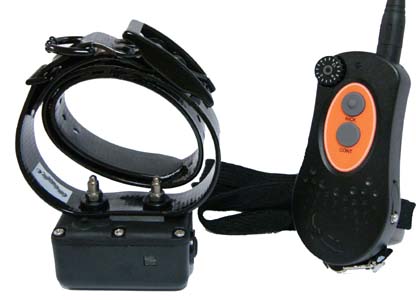 The shock collar is another mechanism pain-based trainers use to force dogs into performing a behavior. This collar produces painful electric shocks that jolt a dog when he’s confused, making life a living hell for the dog. Often so confused, the dog may enter a state of learned helplessness while the electricity continues pulsing through his neck and body.
The shock collar is another mechanism pain-based trainers use to force dogs into performing a behavior. This collar produces painful electric shocks that jolt a dog when he’s confused, making life a living hell for the dog. Often so confused, the dog may enter a state of learned helplessness while the electricity continues pulsing through his neck and body.
There is absolutely no need to train dogs with pain at all. It’s a choice among people, and unfortunately those “trainers” who use these methods have gotten very good at convincing consumers that these painful methods don’t hurt and that they work fast. Yes, they work fast. They quickly create a confused, distrustful, and often fearful dog.
 Love Wags A Tail does get calls from people who have paid their hard-earned money to have their dogs mentally and physically damaged by these methods and now need help. These dog owners knew no better and trusted a person in a profession that has no oversight or standards. Dog training, as a profession, is in the same period medicine was back in the Wild Wild West when merchants in covered wagons drove through town, sold people snake oil, and left without having to face the consequences of their actions.
Love Wags A Tail does get calls from people who have paid their hard-earned money to have their dogs mentally and physically damaged by these methods and now need help. These dog owners knew no better and trusted a person in a profession that has no oversight or standards. Dog training, as a profession, is in the same period medicine was back in the Wild Wild West when merchants in covered wagons drove through town, sold people snake oil, and left without having to face the consequences of their actions.
Please keep in mind the two ways that dogs are motivated to learn, and when you hear the irrational explanations of the “this won’t hurt your dog” from certain trainers, run the other way. Training with reward-based motivation is effective, humane, and good for both you and your dog’s psyches. If you’ve had a bad experience with the pain-based method and need help for your dog, contact me. Or if you’re looking to start training now, I’m ready to be of service to you and your dog with humane dog training methods.
By Helen Verte
Positive Dog Training Fort Lauderdale, Broward county, South Florida
Google +
